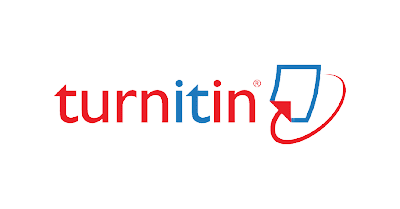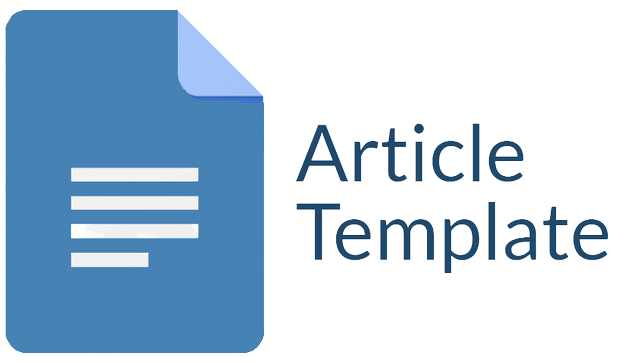EKSPLORASI TOOLS UI/UX BERBASIS WEB MINIM PENGKODEAN DENGAN TEKNOLOGI ARTIFICIAL INTELLIGENCE FRAMER.COM
Abstract
Pengembangan software telah mengalami evolusi yang semakin pesat. Pengembangan software dilakukan dalam berbagai metode, salah satunya adalah metode pengembangan minim pengkodean (Low-Code Development). Tren metode ini terus mengalami perkembangan yang signifikan seiring dengan kebutuhan yang mendesak untuk percepatan dan fleksibilitas dalam pengembangan sebuah software. Platform Framer adalah salah satu platform pengembangan software berbasis website meliputi pengembangan desain UI dan UX yang memiliki fitur utama AI yang dapat membantu desainer dalam menentukan desain prototype UI sebuah website. Dalam penelitian ini menggunakan metode Prototyping dengan tema website penjualan Smartphone bernama PhoneCenter. Pengujian prototype website yang telah dibuat menggunakan metode Cognitive Walkthrough. Tujuan dari penelitian ini adalah menghasilkan prototype website sesuai tema dengan memanfaatkan fitur-fitur yang ditawarkan oleh platform Framer.com, serta pengujian prototype UI/UX yang dibuat menggunakan platform tersebut.
Downloads
References
Alamin, M. A. Al, Malakar, S., Uddin, G., Afroz, S., Haider, T. Bin, & Iqbal, A. (2021). An Empirical Study of Developer Discussions on Low-Code Software Development Challenges. https://doi.org/10.1109/MSR52588.2021.00018
Arifulin, T. (n.d.). How user experience design can improve marketing performance of a website.
Brooke, J. (1996). SUS: A quick and dirty usability scale. https://www.researchgate.net/publication/228593520
Brooke, J. (2013). SUS: A Retrospective (Vol. 8).
Colom, M. (n.d.). Low-Code technologies for application development.
De Souza Baulé, D., Gresse, C., Wangenheim, V., Von Wangenheim, A., & Hauck, J. C. R. (2020). Recent Progress in Automated Code Generation from GUI Images Using Machine Learning Techniques. In Journal of Universal Computer Science (Vol. 26, Issue 9). https://orcid.org/0000-0003-4532-1417
Lewis, J. R., & Sauro, J. (2018). Item Benchmarks for the System Usability Scale. In Journal of Usability Studies (Vol. 13).
Pillai, A., Shinohara, K., & Tigwell, G. W. (2022, October 22). Website Builders Still Contribute to Inaccessible Web Design. ASSETS 2022 - Proceedings of the 24th International ACM SIGACCESS Conference on Computers and Accessibility. https://doi.org/10.1145/3517428.3550368
Purnomo, D. (2017). Model Prototyping Pada Pengembangan Sistem Informasi. JIMP-Jurnal Informatika Merdeka Pasuruan, 2(2).
Rustambek, M. (2023). THE ROLE OF ARTIFICIAL INTELLIGENCE IN WEB SITES.
Sauro, J. (2018, September 14). 5 Ways to Interpret a SUS Score – MeasuringU. https://measuringu.com/interpret-sus-score/
Tiyasa, A., Wirdiani, N. K. A., & Rusjayanthi, N. K. D. (2023). Analysis and design of UI and UX of the Taring application using goal-directed design and cognitive walkthrough methods. MATRIX : Jurnal Manajemen Teknologi Dan Informatika, 13(3), 142–156. https://doi.org/10.31940/matrix.v13i3.142-156
Wahyudin, Y., & Rahayu, D. N. (2020). Analisis Metode Pengembangan Sistem Informasi Berbasis Website: A Literatur Review. Jurnal Interkom: Jurnal Publikasi Ilmiah Bidang Teknologi Informasi Dan Komunikasi, 15(3), 26–40. https://doi.org/10.35969/interkom.v15i3.74
Woo, M. (2020). The Rise of No/Low Code Software Development—No Experience Needed? Engineering, 6(9), 960–961. https://doi.org/10.1016/J.ENG.2020.07.007
Zuheir, I., & Elwazer, I. (n.d.). COMPARISON OF ADI WEBSITE BUILDERS.
Copyright (c) 2024 Ilham Aunnawwar Hastantri, Beni Suranto

This work is licensed under a Creative Commons Attribution-ShareAlike 4.0 International License.
Jurnal allows anyone to compose, correct, and do derivative works, even for commercial purposes, as long as they credit for the original work. This license is the freest. It is recommended for maximum distribution and use of licensed material.
The submitted paper is assumed not to contain any proprietary materials that are not protected by patent rights or patent applications; The responsibility for technical content and protection of proprietary materials rests with the authors and their organizations and not the responsibility of journal or its editorial staff. The primary (first/appropriate) author is responsible for ensuring that the article has been viewed and approved by all other authors. The author's responsibility is to obtain all necessary copyright waivers to use any copyrighted material in the manuscript before submission.
Jurnal Pendidikan, Sains dan Teknologi allows the author(s) to hold the copyright without restrictions and allow the author(s) to retain publishing rights without restrictions. Jurnal Pendidikan, Sains dan Teknologi CC-BY-SA or an equivalent license as the optimal license for the publication, distribution, use, and reuse of scholarly work. Jurnal Pendidikan, Sains dan Teknologi allows the author(s) to hold the copyright without restrictions and allow the author(s) to retain publishing rights without restrictions. Jurnal Pendidikan, Sains dan Teknologi CC-BY-SA or an equivalent license as the optimal license for the publication, distribution, use, and reuse of scholarly work.
In developing strategy and setting priorities Jurnal Pendidikan, Sains dan Teknologi recognize that free access is better than priced access, libre access is better than free access, and libre under CC-BY-SA or the equivalent is better than libre under more restrictive open licenses. We should achieve what we can when we can. We should not delay achieving free in order to achieve libre, and we should not stop with free when we can achieve libre.
Jurnal Pendidikan, Sains dan Teknologi is licensed under a Creative Commons Attribution-ShareAlike 4.0 International License.
You are free to:
- Share a copy and redistribute the material in any medium or format
- Adapt a remix, transform, and build upon the material for any purpose, even commercially.
- The licensor cannot revoke these freedoms as long as you follow the license terms.






